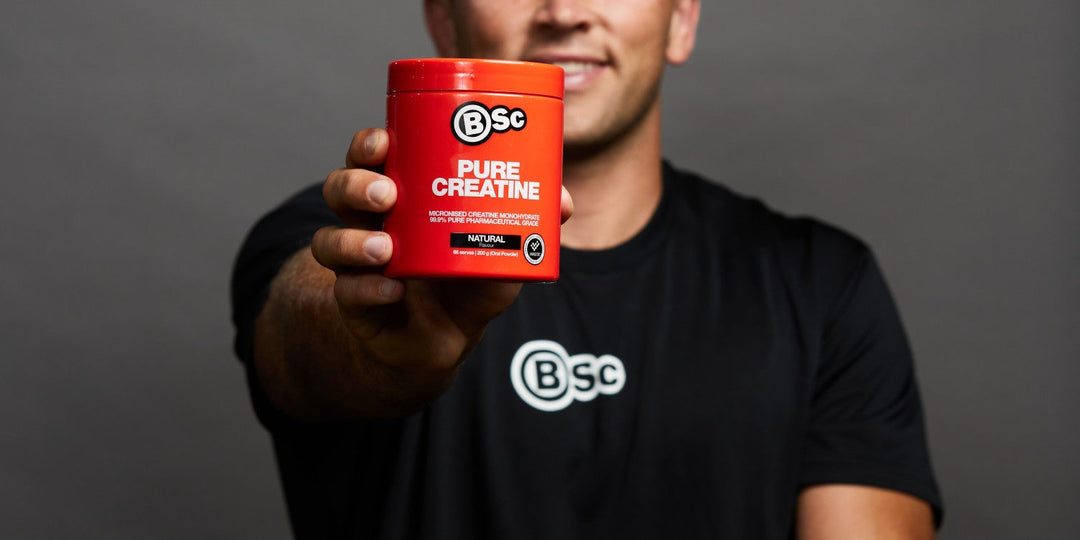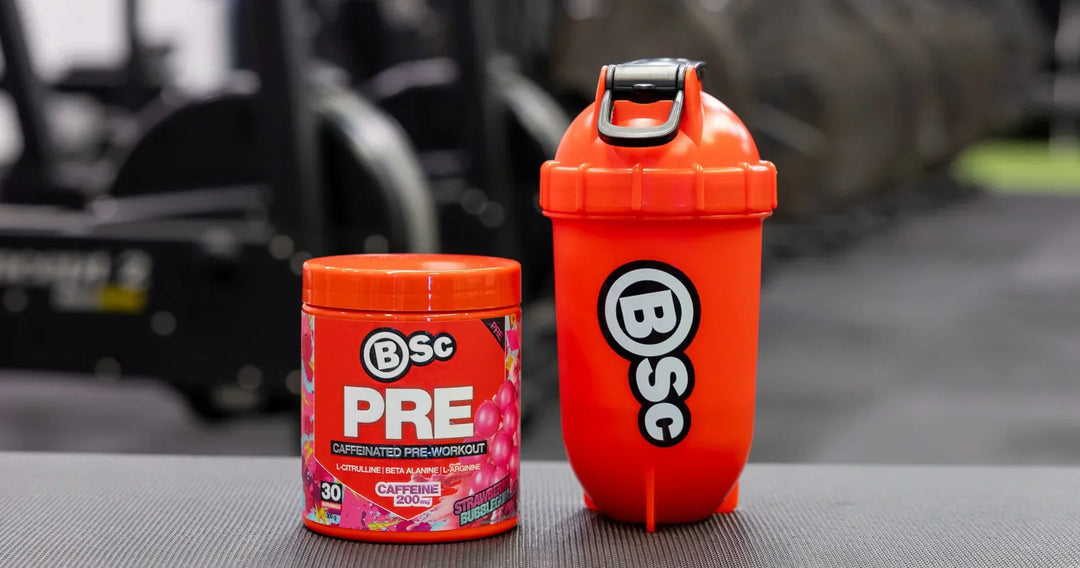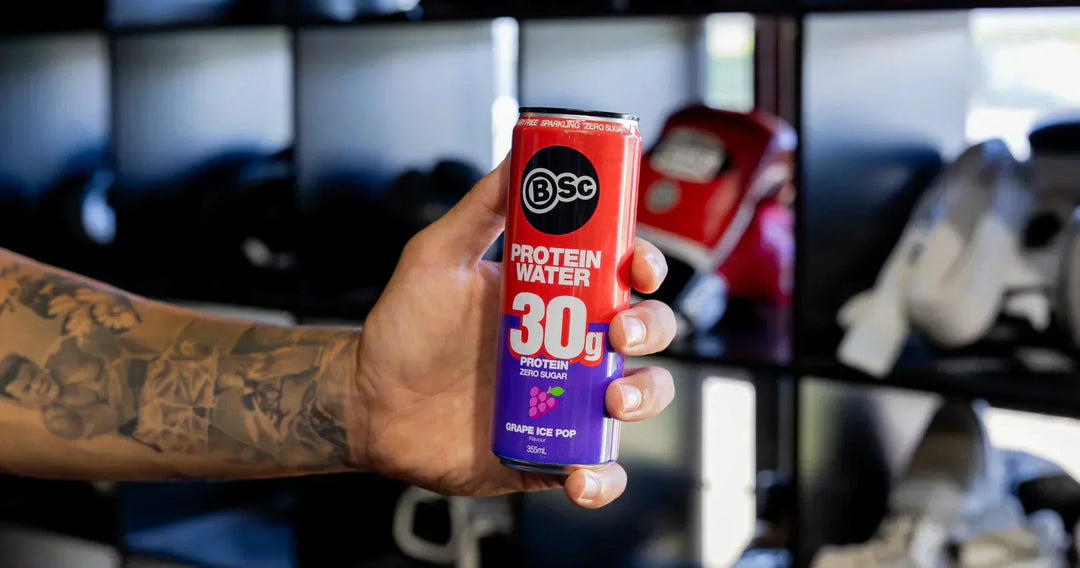Author | The experts at Body Science®
Everything You Need to Know About Niacin
A ‘Niacin flush’ is a side effect of taking high doses of supplemental niacin (Vitamin B3). The flush happens when niacin causes the small capillaries in your skin to dilate, which increases the flow of blood to the surface of the skin.
Niacin flush is a very common side effect, with almost everyone who takes large doses of niacin experiencing the reddening. Although it isn’t harmful in any way, it can take you by surprise if you don’t know that it’s coming!
Read on for all you need to know about niacin and the niacin flush – what it is, what causes it, and what you can do about it. Our Shred Ultra Advanced has a dose of 20mg per serve
What is Niacin Flush?
The onset of a niacin flush comes about 10 to 20 minutes after taking a large dose (100mg or more) of niacin. The flush includes reddening of the skin accompanied by a warm burning or itching sensation. It may be uncomfortable for some people, but harmless.
Flushing of the face is the most common symptom, but it can also occur in the neck and upper body. The flush tapers off over time and usually disappears within 30 minutes to 2 hours.
Symptoms include reddening of the skin which may appear as a mild flush or be red like a sunburn. Tingling, burning, or itching. This can feel mildly uncomfortable, or even painful in some individuals. Skin that's warm to the touch, similar to experiencing sunburn.
Is Niacin Flush dangerous?
Niacin flush is harmless. Although the flush is not harmful, people often cite it as the reason they want to discontinue usage. According to reports, 5–20% of people who have been prescribed niacin stop using it because of the flush.
Some people misinterpret these symptoms as a negative side effect or an allergic reaction. Researchers have found that up to 50% of people taking an immediate-release form of niacin will experience a flush reaction.
The most important aspect is understanding why the flush is occurring and being aware that it is nothing to be concerned about.
There are two main forms of nicotinic acid supplements: immediate release, where the whole dose is absorbed at once, and extended-release which dissolves more slowly. Niacin flush is associated with taking the immediate-release form of nicotinic acid. It's so common that at least half of people who take high doses of immediate-release niacin supplements experience it. The other supplemental form or niacin, niacinamide, does not produce flushing. However, this form is not reported to be effective at altering blood fats such as cholesterol. "So, why should I take it?"...
✓ Energy Production
Niacin is also known as Vitamin B3. It's part of the B complex of vitamins that play an essential role in turning food into energy for the body. All B vitamins help the body convert food (carbohydrates) into fuel (glucose), which is burned to produce energy.
✓ Lower Risk of Cardiovascular Disease
It also helps to keep your nervous system, digestive system, and skin healthy, however, it is best known for its role in managing cholesterol and protecting against cardiovascular disease.
✓ Boost Brain Function
Your brain requires niacin — as a part of the coenzymes NAD and NADP — to get energy and function properly. In fact, niacin deficiency has been associated with brain fog and a number of psychiatric symptoms.
✓ Improves Cholesterol Levels
As a supplement, niacin is most commonly used to treat high cholesterol levels. Nicotinic acid is the supplement form people usually use for this purpose. Taking high doses of niacin has been shown to produce the following improvements in blood cholesterol and lipids:
Increase HDL cholesterol: It prevents the breakdown of apolipoprotein A1, which is used to make "good" HDL cholesterol. It can increase HDL cholesterol by up to 20–40%.
Reduce LDL cholesterol: Niacin speeds the breakdown of apolipoprotein B in "bad" LDL cholesterol, causing less to be released by the liver. It can reduce LDL cholesterol by 5–20%.
Lower triglycerides: Niacin interferes with an enzyme that's essential for making triglycerides. It can lower triglycerides in the blood by 20–50%.
✓ Improves Cholesterol Levels
As a supplement, niacin is most commonly used to treat high cholesterol levels. Nicotinic acid is the supplement form people usually use for this purpose. Taking high doses of niacin has been shown to produce the following improvements in blood cholesterol and lipids:
Increase HDL cholesterol: It prevents the breakdown of apolipoprotein A1, which is used to make "good" HDL cholesterol. It can increase HDL cholesterol by up to 20–40%.
Reduce LDL cholesterol: Niacin speeds the breakdown of apolipoprotein B in "bad" LDL cholesterol, causing less to be released by the liver. It can reduce LDL cholesterol by 5–20%.
Lower triglycerides: Niacin interferes with an enzyme that's essential for making triglycerides. It can lower triglycerides in the blood by 20–50%.

How to prevent or reduce Niacin Flush
People generally develop a tolerance to higher doses of niacin. So even if you experience niacin flush when you first start taking it, it is likely to reduce or stop in time. If you find that you are very sensitive or you find the niacin flush particularly uncomfortable, here are some key strategies people use to prevent niacin flush..
Give It Time
As mentioned, many people find that tolerance levels don’t take long to build up, with symptoms easing not long after beginning supplementation.
Ease Into It
Smaller dosages of Niacin will not create the same level of flushing if any at all. Some experts recommend starting with a smaller dose and then increase over the course of 1-2 months. This strategy may help bypass the flush entirely. However if taking niacin within a combined supplement, such as Shred Ultra Advanced, and reducing your serving, please note that you may not be getting a therapeutic dosage of other key ingredients for optimal results.
Have a Snack
Try taking your niacin with a small snack if the flush is too much to handle. Taking your niacin with food may lengthen the amount of time it takes to be fully absorbed and has also been found to reduce the side effect. This can reduce the impact of reddening to make it more manageable. Some research even suggests that eating an apple prior to taking niacin may help, with the pectin in apple seemingly responsible for the protective effect.
IMPORTANT NOTE: As always, if you're experiencing niacin flush, or are concerned about it as a possible side effect of these supplements, please discontinue use and consult your physician or healthcare professional. They can help you figure out how to reduce the chances of flush or discuss alternative treatments.







